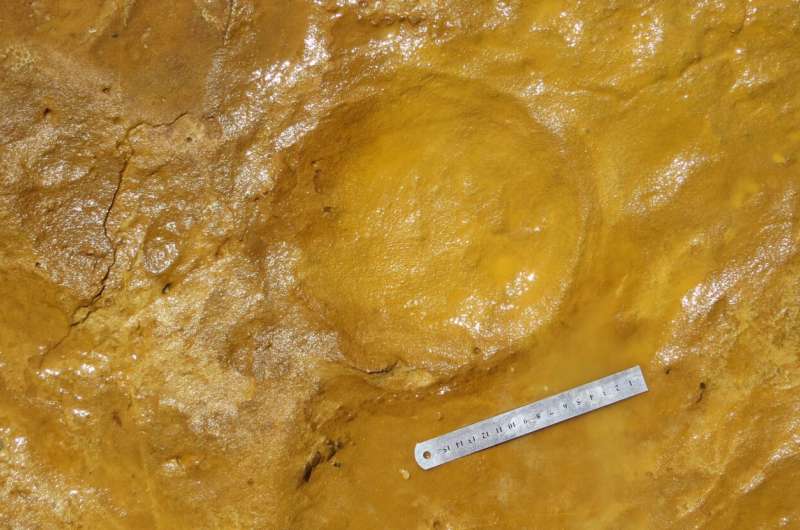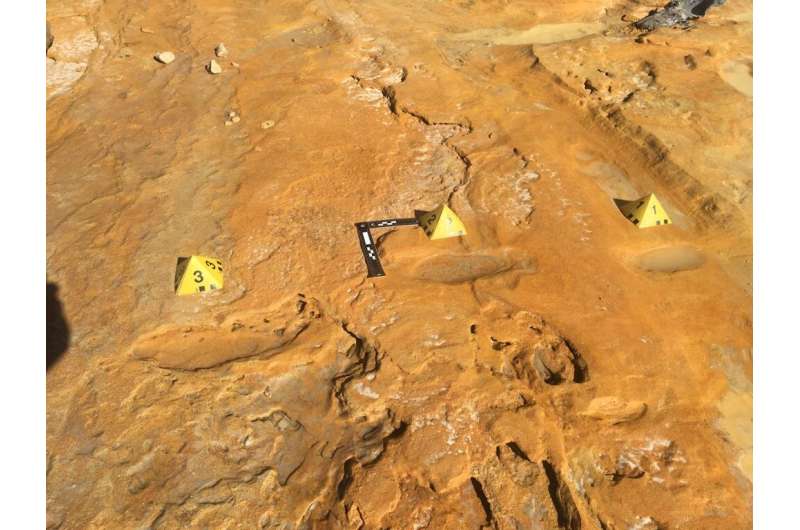Fossilized footprints reveal prehistoric elephant nursery

Fossilized footprint tracks from the Matalascañas Trampled Surface in Huelva, south west Spain suggest that the area was used by straight-tusked elephants (Palaeoloxodon antiquus) to raise newborn offspring during the Late Pleistocene (129,000 to 11,700 years ago), according to a study published in Scientific Reports.
Carlos Neto de Carvalho and colleagues analyzed 34 sets of footprint tracks. Based on the rounded-elliptical shape of the prints and other criteria, the authors attributed the tracks to straight-tusked elephants, which are closely related to African forest elephants alive today. To determine the age of individual elephants, the authors calculated shoulder height and body mass based on footprint length.
The authors identified footprints of 14 calves, which they estimate as having been between newborns and two years of age. Their body mass was estimated to have been between 70 and 200kg. The authors also categorized tracks from eight juveniles (two to seven years old) and six adolescents (eight to 15 years old). The high frequency of young elephants may indicate that the area, which once had an interdune pond, was a reproductive site for elephant herds, with the surrounding vegetation providing a food source for young elephants unable to travel long distances to other food sources.
The authors also identified adult tracks possibly made by three adult females (over 15 years) based on the tracks' close proximity to those of young calf footprints. Only two tracks were identified as having been made by males, with much larger footprints (over 50cm in length) and estimated body masses of over seven tonnes.

The authors conclude that the Matalascañas Trampled Surface in Huelva was likely a rich reproductive habitat for female elephants to raise their young and was visited rarely by male individuals.
More information: Carlos Neto de Carvalho et al, First tracks of newborn straight-tusked elephants (Palaeoloxodon antiquus), Scientific Reports (2021). DOI: 10.1038/s41598-021-96754-1 , www.nature.com/articles/s41598-021-96754-1
Journal information: Scientific Reports
Provided by Nature Publishing Group




















